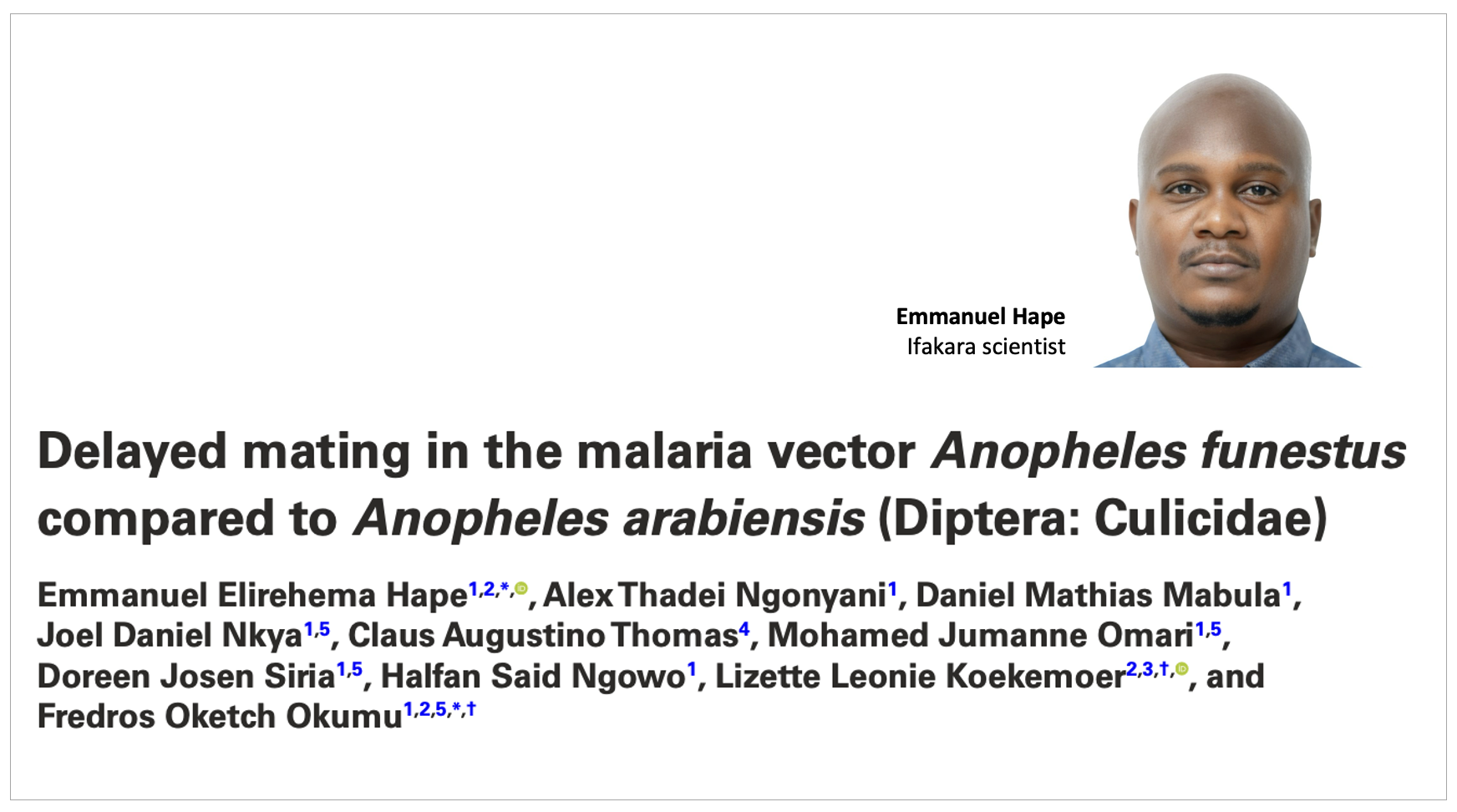
MOSQUITOES: Scientists crack the code on their elusive mating habits

A team of scientists from the Ifakara Health Institute in Tanzania and partner research centers in South Africa and the UK has uncovered key differences in how two major malaria vectors, anopheles funestus and anopheles arabiensis, mate in controlled environments.
The findings — published in the Journal of Medical Entomology on May 8, 2025 — could pave the way for better mosquito rearing methods and innovative malaria control strategies, such as sterile insect techniques and genetic interventions.
Why it matters
Understanding when and how mosquitoes mate is more than an academic curiosity — it’s a crucial step in the global fight against malaria. Funestus has been notoriously difficult to breed in captivity, limiting scientists’ ability to study and control it. By pinpointing its delayed mating patterns and how lighting conditions influence these habits, researchers can now design more effective laboratory rearing systems.
This knowledge may help produce large numbers of mosquitoes for use in next-generation control programs, reducing populations in the wild and ultimately cutting malaria transmission.
What the study found
- Slower starters: Arabiensis wasted no time, with about a third mating within three days of emerging. In contrast, funestus took more than a week to reach similar mating levels.
- Light makes a difference: Red lighting sped up funestus mating but had no effect on arabiensis.
- Night-time romance: Arabiensis peaked in mating at 10 PM, while funestus preferred 11 PM.
- Successful insemination: More than 92% of copulating pairs transferred sperm and mating plugs, confirming successful mating.
Behind the Research
This work was a collaborative effort involving experts from multiple research centers, including:
- Ifakara Health Institute, Tanzania
- Wits Research Institute for Malaria, University of the Witwatersrand, South Africa
- Kilimanjaro Christian Medical University College, Tanzania
- University of Glasgow, UK
From observation to application
The researchers conducted round-the-clock monitoring of mosquito cages in Tanzania, switching from flashlights to artificial red light to minimize disturbance. By tracking age, mating time, and environmental conditions, they uncovered species-specific habits that had never been clearly documented before.
With funestus now more reliably breedable in the lab, scientists are better positioned to:
- Test new insect control strategies
- Study mosquito biology in detail
- Reduce malaria transmission through targeted population suppression
Ifakara’s Emmanuel Hape leads collaborative research
Emmanuel Hape—a researcher at the Ifakara Health Institute, Tanzania, and the University of the Witwatersrand, South Africa— was the first author. The study was supervised by Dr. Fredros Okumu, the last author, who is also from the Ifakara Health Institute; the University of the Witwatersrand, South Africa, and the University of Glasgow, UK.
Alongside Hape and Okumu, the research brought together a team of dedicated contributors, including Alex Ngonyani, Daniel Mabula, Joel Nkya, Claus Thomas, Mohamed Omari, Doreen Siria, Halfan Ngowo, and Lizette Koekemoer.
While Ifakara Health Institute, University of Glasgow, UK and the University of the Witwatersrand were at the heart of the project, the research drew strength from a network of partner institutions. Collaborators included St. Francis University College of Health and Allied Sciences (SFUCHAS) in Tanzania and the National Health Laboratory Services in South Africa.
>> Read the full article here
